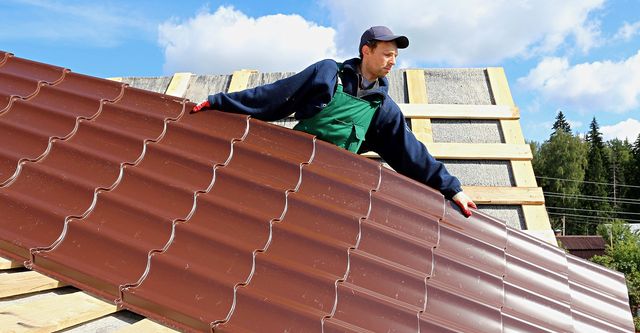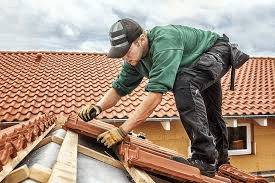A Comprehensive Guide to Effective Roof Covering Flat Roof Installment
The ins and outs of level roofing installation demand a precise strategy, starting with a thorough understanding of various level roof kinds and the important products required for optimum efficiency. A successful setup pivots not just on the option of products however also on the prep work and execution of each step involved in the process.
Recognizing Apartment Roof Types
When thinking about level roofings, it is important to understand the numerous types available, as each deals unique benefits and drawbacks customized to certain needs. One of the most common kinds of level roofs include Built-Up Roofing (BUR), Changed Bitumen, and Single-Ply membranes.
Built-Up Roofing contains several layers of asphalt and gravel, providing superb toughness and weather resistance. It is especially beneficial in areas susceptible to extreme weather yet may need even more maintenance because of its complicated construction.
Changed Bitumen is a preferred option for its simplicity of setup and versatility. It commonly utilizes a self-adhesive or torch-applied approach, which can be beneficial for fast repair work and long-term performance. Nonetheless, its lifespan can be much shorter contrasted to BUR.
Single-Ply membrane layers, consisting of Thermoplastic Olefin (TPO) and Ethylene Propylene Diene Monomer (EPDM), are identified for their light-weight nature and energy effectiveness. These materials are typically liked for business buildings because of their cost-effectiveness and ease of installation (Cleveland Roofing Specialists). However, they may not provide the exact same degree of insulation as other choices.
Each roof type needs careful factor to consider based on environment, budget, and specific job requirements.
Important Products for Flat Roof Covering
A variety of crucial products are critical for the effective setup of flat roof. The option of materials directly effects toughness, performance, and overall efficiency.
One of the key materials is the roofing membrane, which can be built from various compounds such as thermoplastic polyolefin (TPO), ethylene propylene diene monomer (EPDM), or PVC. Each type provides special advantages, consisting of UV resistance and versatility, which are essential for long term efficiency.
In addition to the membrane layer, insulation materials play a substantial role in energy effectiveness. Stiff foam boards or polyisocyanurate insulation are prominent options, as they offer exceptional thermal resistance and wetness administration.
In addition, roof adhesives and sealers are vital for making sure a water tight setup. These items have to work with the chosen membrane layer to protect against damage with time.
Planning For Installment
Proper prep work is essential for an effective level roofing installation, as it lays the foundation for a durable and reliable roof. Begin by carrying out a thorough inspection of the existing roof structure. Seek signs of damages, consisting of leaks, rot, or inadequate drainage, which might jeopardize the new roof. Guarantee that the hidden products are sound and can support the weight of the new roofing parts.
Next, collect all necessary devices and materials, ensuring that they satisfy industry criteria. This includes water-proof membrane layers, insulation, flashing, and bolts. Familiarize on your own with the producer's specifications, as adherence to these standards is critical for guarantee functions.
Think about climate problems; prevent installation during hefty rainfall or extreme temperatures, which can affect material efficiency. By taking these primary actions, you can boost the possibility of an effective level roof setup that meets both visual and architectural demands.
Step-by-Step Setup Process
With the foundation established with detailed preparation, the following stage involves carrying out the flat roof installment methodically. Begin by making sure that the architectural deck go to these guys is clean and free from particles. Next, mount a vapor obstacle to protect against dampness accumulation below the roof covering material. This step is important for preserving the roof covering's integrity in time.
Adhering to the vapor obstacle installation, lay down insulation boards, guaranteeing they fit tightly together to decrease thermal bridging. Secure the insulation with suitable fasteners based on the roofing type and local structure codes - Cleveland Roofing Specialists.
Guarantee correct overlap at seams and edges to create a water tight seal. Use adhesives, mechanical bolts, or warmth welding as called for. Install flashing around boundaries, vents, and any kind of roofing system infiltrations to enhance waterproofing. After installment, carry out a thorough examination to identify any kind important site of potential problems before ending the job, guaranteeing a trusted and robust flat roofing system.
Maintenance Tips for Longevity
Routine maintenance is important to guarantee the longevity and performance of a flat roofing system. Among the key tasks is to conduct regular YOURURL.com evaluations a minimum of twice a year, preferably in spring and autumn. During these evaluations, look for indicators of wear, such as blisters, fractures, or pooling water, which can show underlying concerns.

Guaranteeing correct drain is essential to avoid water build-up. Check and clear seamless gutters, downspouts, and scuppers to guarantee unblocked water circulation. Additionally, check seals around vents, skylights, and various other penetrations for any indicators of degeneration, using caulk or sealer as needed to keep a watertight obstacle.
Last but not least, take into consideration professional maintenance services every few years for thorough examinations and repair services. By adhering to these maintenance pointers, you can significantly expand the life of your flat roof covering, guaranteeing it stays a reputable guard against the aspects.
Verdict
Effective level roof installation requires an organized method incorporating extensive inspections, product selection, and thorough prep work. Following the detailed actions during the setup process ensures the proper application of roof membrane layers and insulation while enhancing waterproofing through effective flashing setup. Additionally, executing routine maintenance practices significantly adds to the long life of the roof. By following these standards, a long lasting and trustworthy flat roof solution can be attained, qualified of enduring different environmental problems.
The intricacies of level roofing system setup need a meticulous method, starting with a comprehensive understanding of different flat roof kinds and the necessary products required for optimal performance.Correct preparation is crucial for a successful flat roof covering setup, as it lays the foundation for a efficient and long lasting roof system. After setup, conduct a comprehensive assessment to recognize any type of potential concerns before ending the task, making sure a robust and dependable flat roof covering system.
